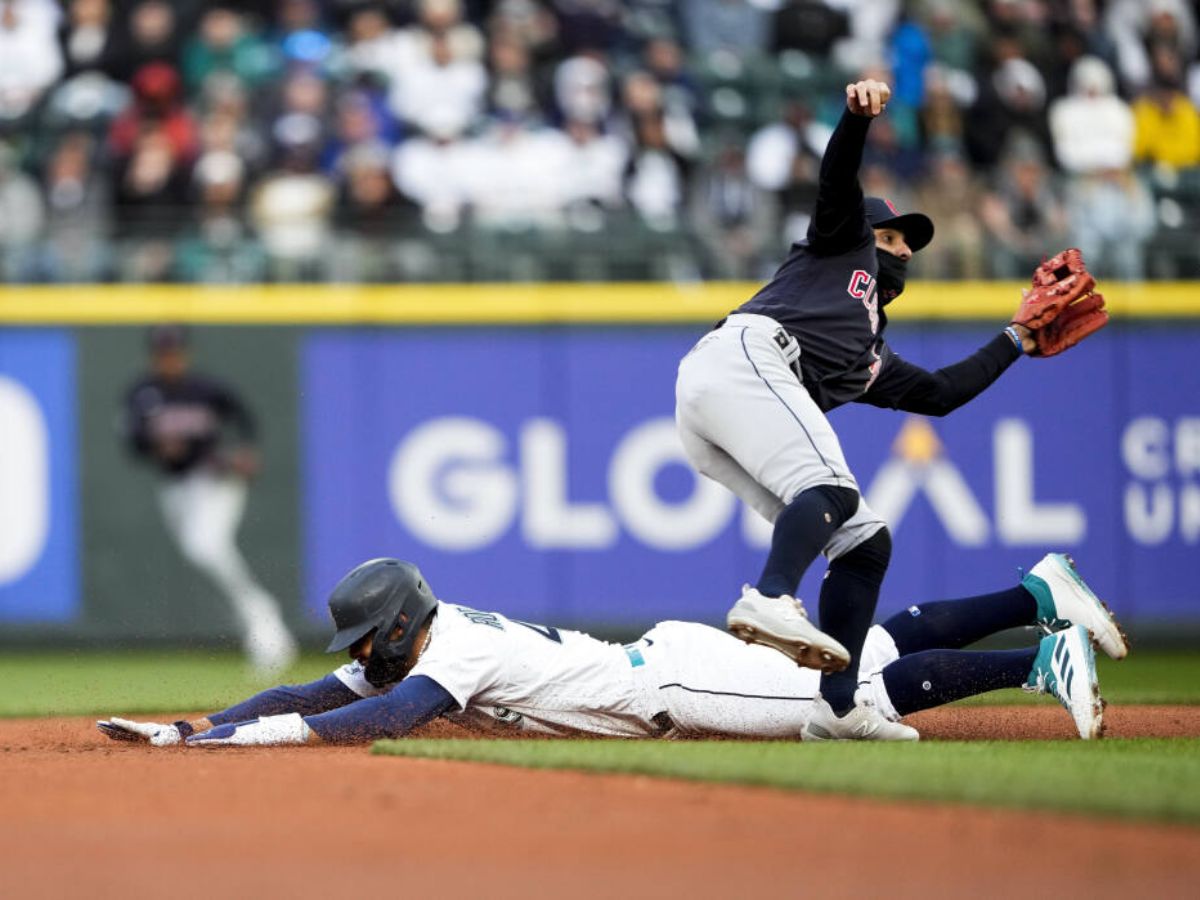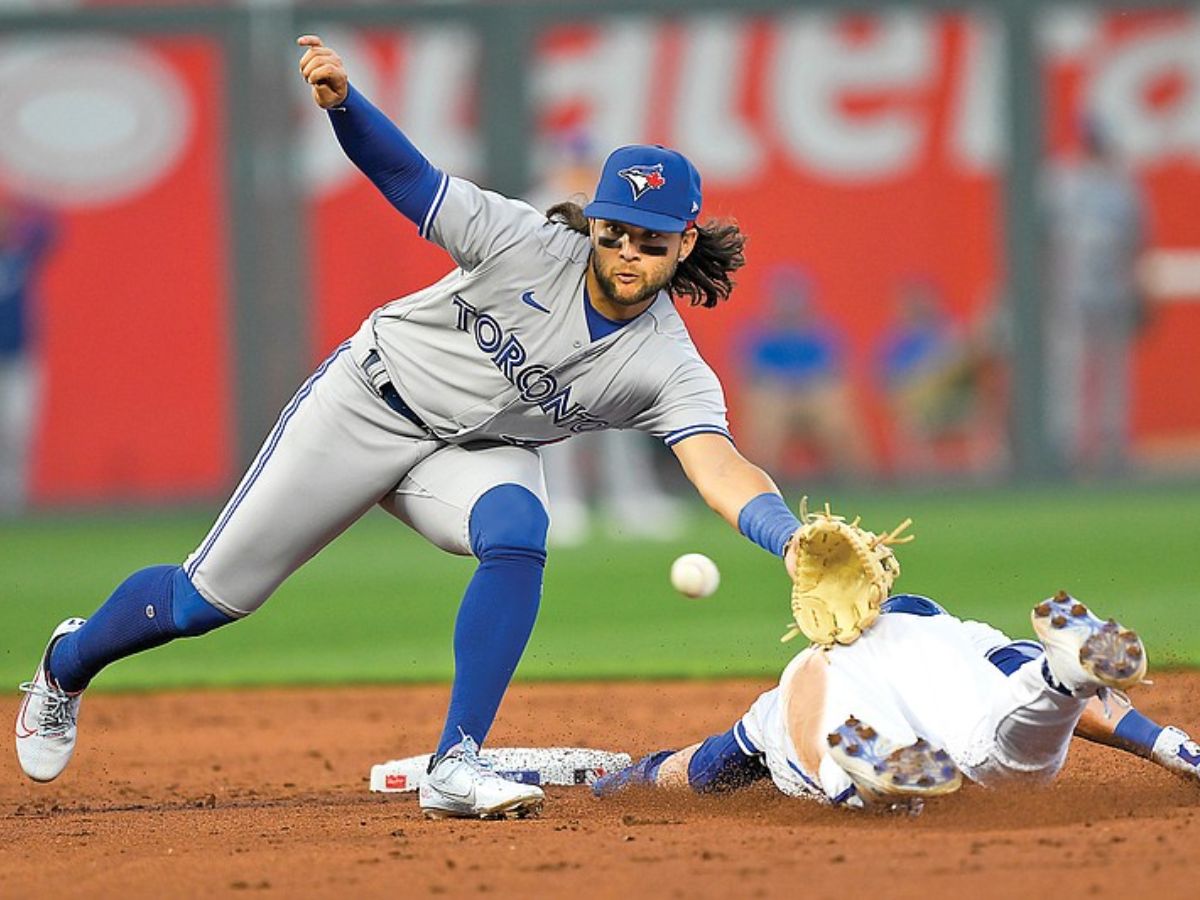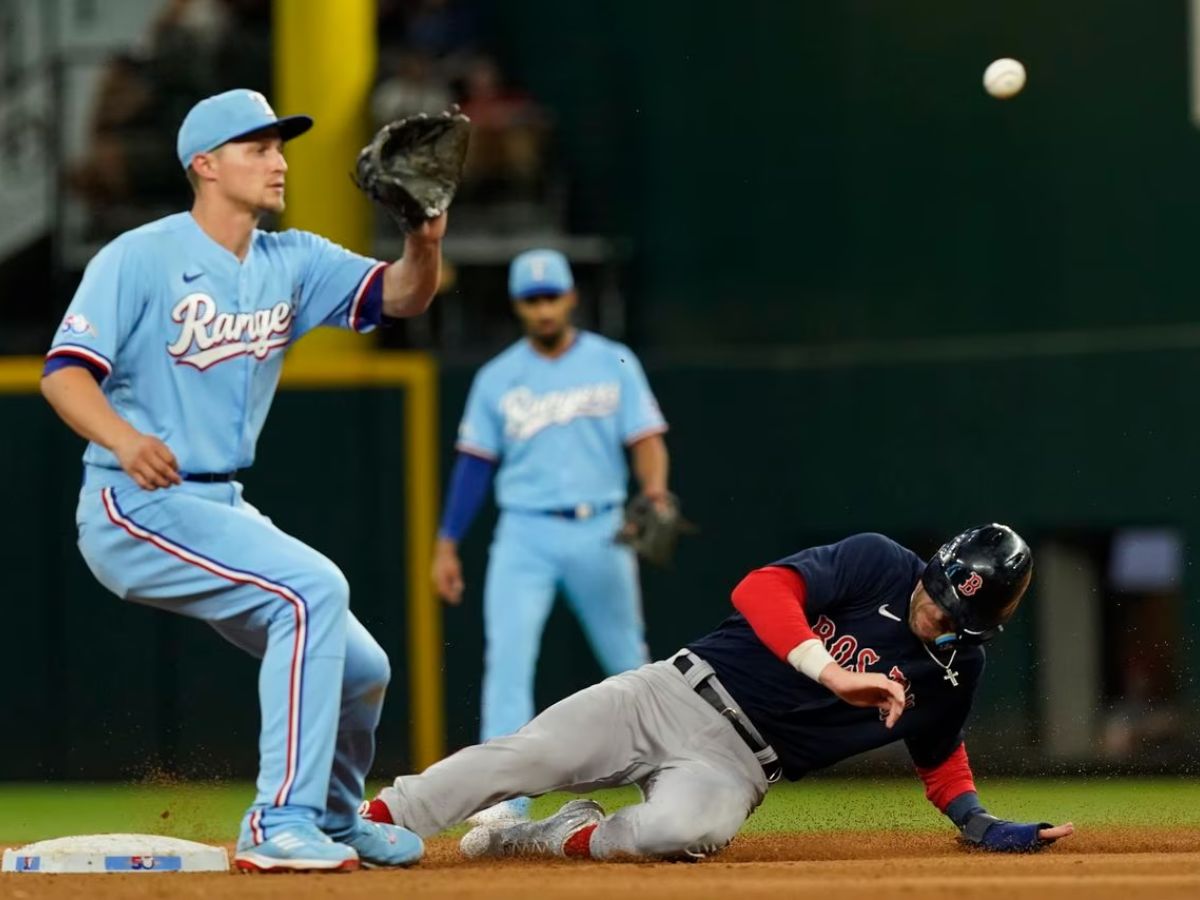In baseball, stealing a base is a strategic move that can give the offensive team an advantage by advancing a runner into a scoring position. When a runner attempts to steal second base, the pitcher throws the ball to the catcher, who then tries to throw the runner out.

The shortstop plays a critical role in this play by moving toward second base to receive a possible throw from the catcher. They aim to catch the ball and tag the runner if the catcher’s throw is successful. This defensive maneuver helps prevent the runner from reaching second base safely and potentially scoring. Understanding the dynamics of base stealing and the responsibilities of different positions, like the shortstop, is crucial for a successful defense in baseball.
Contents Inside
Cracking The Code: Who Covers Second Base On A Steal
Understanding the positioning dynamics during a steal is crucial in knowing who covers second base. The roles of the different players involved require analysis. Pitchers play a significant role in this situation. They need to be aware of the runner’s movement and react accordingly.
The catcher is another crucial piece of the puzzle. They need to understand the pitcher’s intentions well and be prepared to cover second base if needed. Middle infielders, especially the shortstop, usually cover second base on a steal.
Their positioning allows them to react quickly and make a play if the runner attempts to steal. Communication and coordination between the players is key to successfully covering second base on a steal. By understanding the dynamics involved, teams can effectively defend against stolen base attempts.
The Leadoff: Pitcher’s Responsibility
The pitcher plays a crucial role in a steal attempt on second base. Understanding the responsibilities in such a situation is essential. One option available to the pitcher is to deliver a pitch designed to prevent the runner from successfully stealing.
Another option is quickly executing a pickoff move to catch the runner off guard. The pitcher must carefully evaluate the risk and reward of each option and make a split-second decision. Factors such as the runner’s speed, the pitcher’s ability to throw accurately, and the overall game situation all come into play.
Ultimately, the pitcher aims to disrupt the runner’s attempt and potentially secure an out. By properly executing their responsibilities, pitchers can greatly contribute to the success of their team’s defense on a steal attempt.
The shortstop is crucial in covering second base on a steal play. Positioned between the second base and the second baseman, the shortstop protects the base. The shortstop can prevent the runner from advancing to third base by strategically positioning themselves.
They need to anticipate the steal and react quickly to catch the ball from the catcher. The shortstop must possess swift reflexes and precise timing to make the crucial tag or force the runner out. Their positioning on a steal play is influenced by various factors, such as the speed and skill of the runner, the pitch count, and the game situation.
The shortstop’s role as the protector of second base highlights their importance in the defense and their ability to impact the outcome of the steal play.
The Essential Double Play: Second Baseman’S Duties
The second baseman plays a crucial role in covering second base during a steal attempt. Positioned strategically, their responsibilities include preventing stolen bases, covering second base on a steal, and assisting the shortstop in executing a double play. Factors that influence their positioning include the speed of the runner, the pitcher’s delivery time, and the specific play called by the coach.
The second baseman must anticipate the timing and location of the steal attempt, adjusting their positioning accordingly. The second baseman can effectively execute their duties in the essential double play by maintaining good communication and coordination with the pitcher, catcher, and shortstop.

Their skill, speed, and quick reactions are invaluable in stopping stolen bases and completing successful double plays, contributing to the team’s defensive success.
The Backup Plan: Involvement Of The First Baseman
The involvement of the first baseman is crucial in covering second base on a steal. The coordination between the first baseman and other fielders is key. They must communicate and anticipate the steal to ensure a smooth defensive play. The first baseman needs to position himself strategically to prevent the runner from advancing to third base.
Timing is essential as the first baseman must be ready to receive the throw from the catcher and apply the tag swiftly. This cooperation allows the team to limit the opponent’s scoring opportunities and increases defensive effectiveness. The first baseman’s role in covering second base on a steal should not be overlooked, as their involvement can significantly impact the outcome of the play.
Outfield Guardians: Outfielders’ Impact
Outfielders play a crucial role in covering second base during a steal. They strategically position themselves to lend support in stealing situations. Swift and agile, these guardians of the outfield employ various strategies to assist their teammates in executing a successful steal.
They anticipate the runner’s movements and quickly react to the play. They create a defensive presence that deters the runner from taking an extra base by charging towards second base. Additionally, outfielders communicate with the infielders, ensuring seamless coordination and alignment.
Their keen observation and anticipation skills allow them to make split-second decisions, contributing to the overall success of the play. In essence, outfielders serve as the unsung heroes, protecting the team’s defensive integrity and aiding in thwarting potential steals. Their impact cannot be underestimated in the fast-paced game of baseball.
Essential Elements Of Successful Coverage
Effective coverage on second base during a steal attempt involves strong coordination and various factors. Timing and communication are crucial for fielders to ensure a successful coverage. It requires quick reactions, anticipation, and proper positioning. Players need to be aware of the runner’s speed and the pitcher’s ability to hold the runner.
The second baseman must be ready to receive the throw from the catcher and apply the tag efficiently. The shortstop should be prepared to cover second base if the second baseman moves to catch the throw. Additionally, the first baseman may need to hold the runner if he breaks for third base.
Successful coverage relies on the seamless collaboration and understanding between fielders, emphasizing the importance of teamwork and situational awareness on the field.
Analyzing Real-Life Scenarios
Successful positioning on stolen base attempts is a crucial aspect of baseball strategy. By analyzing real-life scenarios, we can learn from instances where coverage was lacking or inadequate. These notable examples offer valuable insights into the importance of positioning on steals.
Coaches and players can identify the strengths and weaknesses in their own strategies by reviewing these scenarios. Understanding the optimal positioning for fielders during a stolen base attempt can enhance a team’s defensive performance. Properly covering second base requires a combination of anticipation, quick decision-making, and effective communication between the pitcher, catcher, and middle infielders.
By studying these examples, teams can improve their defensive strategies and increase their chances of success in stealing situations.
Unraveling The Positioning Puzzle: Expert Insights
Sports enthusiasts often wonder about the positioning strategies used when covering second base during steal attempts. To shed light on this puzzle, we sought insights from baseball experts. They provide valuable tips and tricks for effective positioning during these intense moments on the field.
Experts emphasize the importance of anticipating the runner’s movements and being aware of their speed and agility. By positioning oneself strategically, players can increase their chances of successfully stopping the steal. Maintaining a balance between being close enough to the base and staying ready to catch the ball is crucial.
Experts also stress the significance of quick reaction times and precise footwork to swiftly tag the runner out. Learning from these expert insights can help players master the coverages required for second base steals, significantly elevating their defensive performance on the diamond.
Mastering The Positioning Puzzle: Drills And Practices
Improving coverage on stolen base attempts involves repetition and coordination. Players must continuously practice positioning and drills that enhance their skills. By focusing on these exercises, athletes can master the positioning puzzle and become more effective in covering second base during a steal.

Repetitive practice is crucial, as it allows players to build muscle memory and improve their reaction time. Coordination between the catcher, infielders, and pitcher is also key, as each player needs to understand their responsibilities and work together seamlessly. From footwork drills to communication exercises, a comprehensive approach to training is necessary.
By consistently honing their skills in these areas, players can confidently navigate the unique challenges posed by stolen base attempts and contribute to the team’s overall success.
Frequently Asked Questions On Who Covers Second Base On A Steal
Who Covers Second Base When Stealing In Baseball?
In baseball, when a player attempts to steal a base, the responsibility of covering second base typically falls on the shortstop or the second baseman. It depends on the defensive alignment of the team and the specific play called by the coach.
Why Does The Shortstop Or Second Baseman Cover Second Base During A Steal?
The shortstop or second baseman is usually positioned near second base during a steal because they are the middle infielders responsible for covering that base. Their proximity ensures a quicker tag on the runner if he attempts to advance or steal the base.
What Happens If Nobody Covers Second Base On A Steal?
If nobody covers second base during a steal, the runner could easily advance and potentially even score a run. It is crucial for the defensive team’s infielders to communicate and coordinate their positions to prevent the runner from taking advantage of the uncovered base.
Are There Any Other Positions That Can Cover Second Base On A Steal?
In some situations, the third baseman may also be responsible for covering second base during a steal. This could occur if a specific defensive play is called or if the third baseman notices a potential steal and decides to move towards second base to provide coverage.
Conclusion
Understanding the responsibilities of players on a steal play can greatly enhance your knowledge and appreciation for the game of baseball. The second baseman plays a vital role in defending against stolen bases, often covering the base while the shortstop covers the bag on a steal attempt.
This split-second decision can be crucial in preventing runners from advancing and ultimately impacting the outcome of a game. By being aware of the defensive strategies and communication between players, you can gain a deeper understanding of the game and the intricacies involved in executing successful steal plays.
So, whether you’re a player, coach, or fan, take the time to appreciate the teamwork and strategy that goes into covering second base on a steal.
